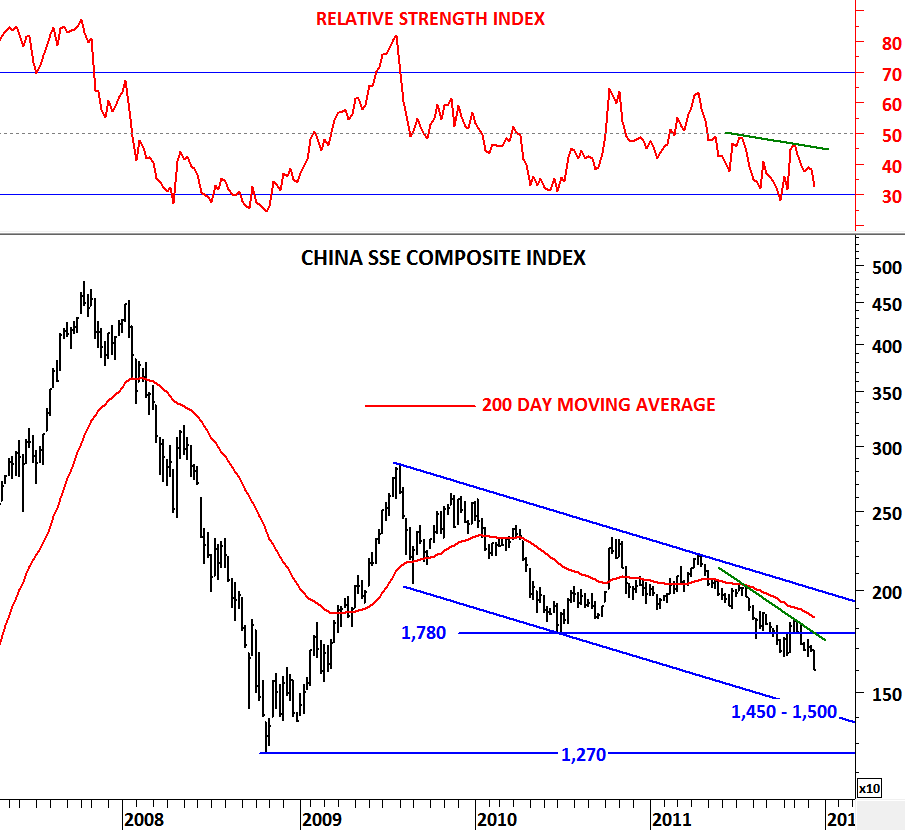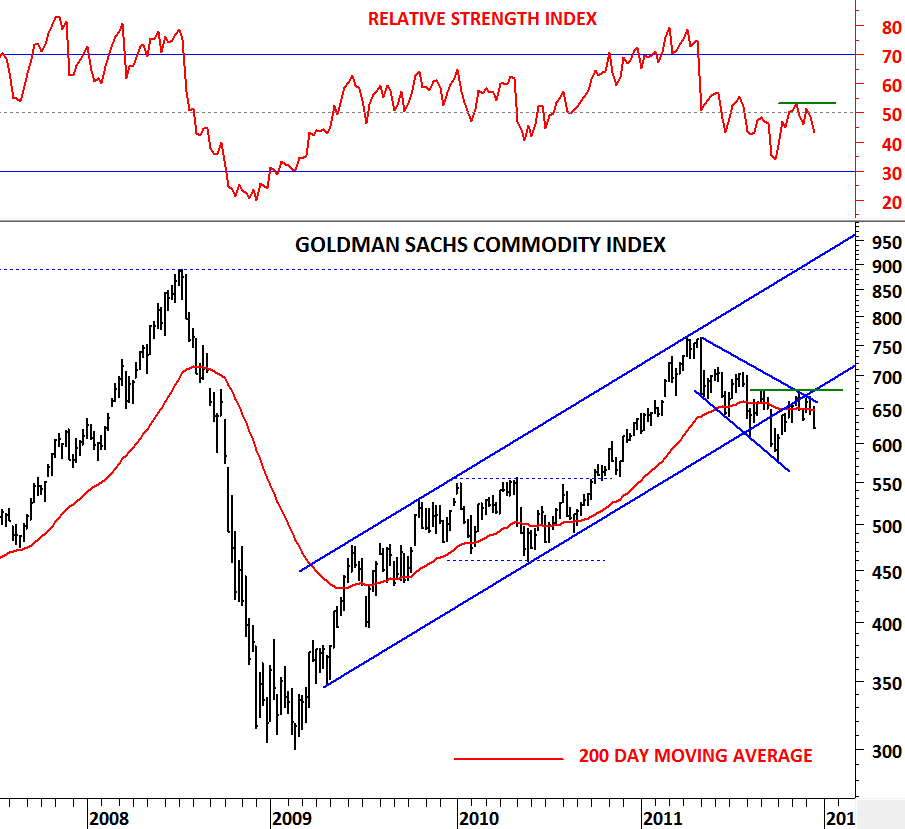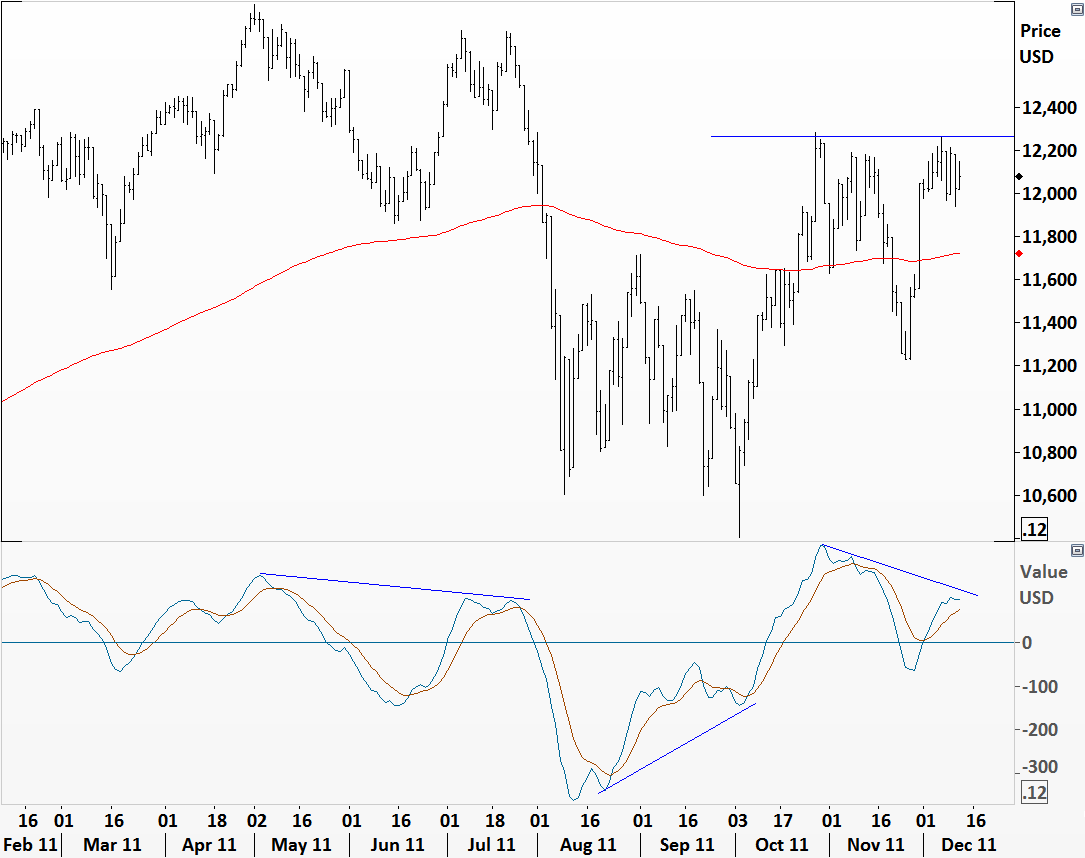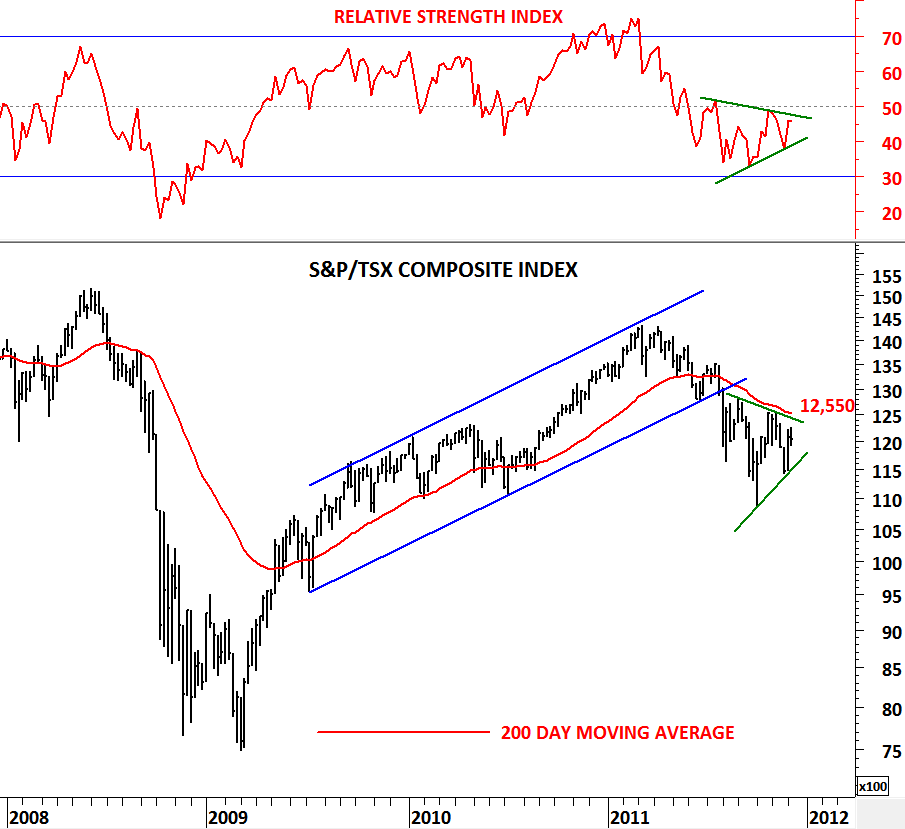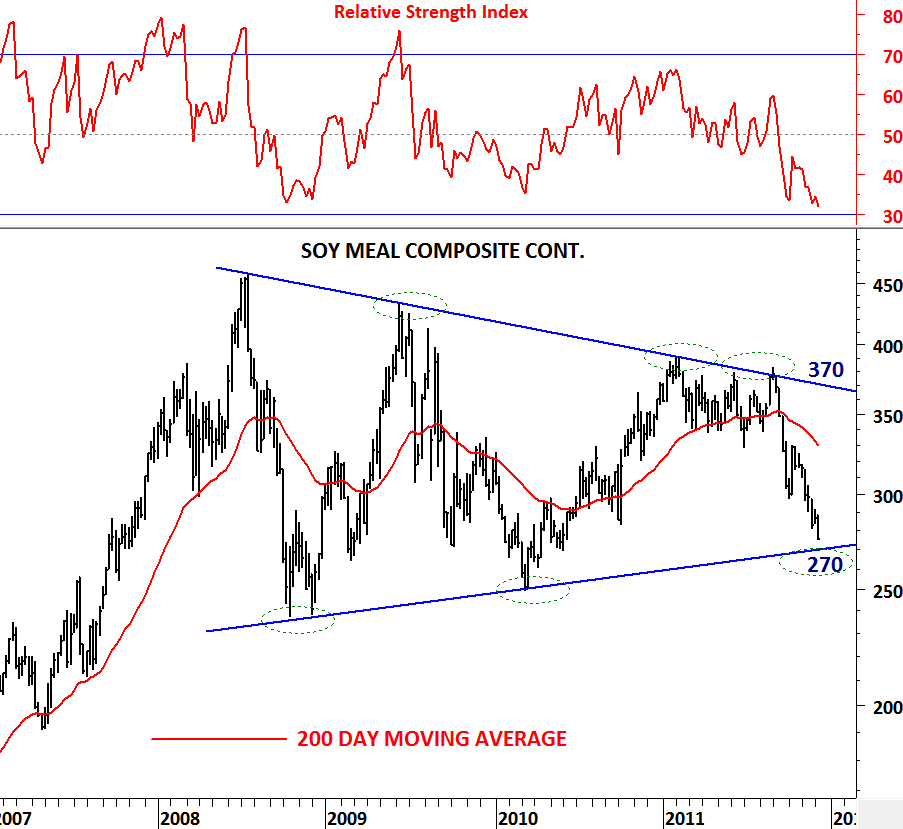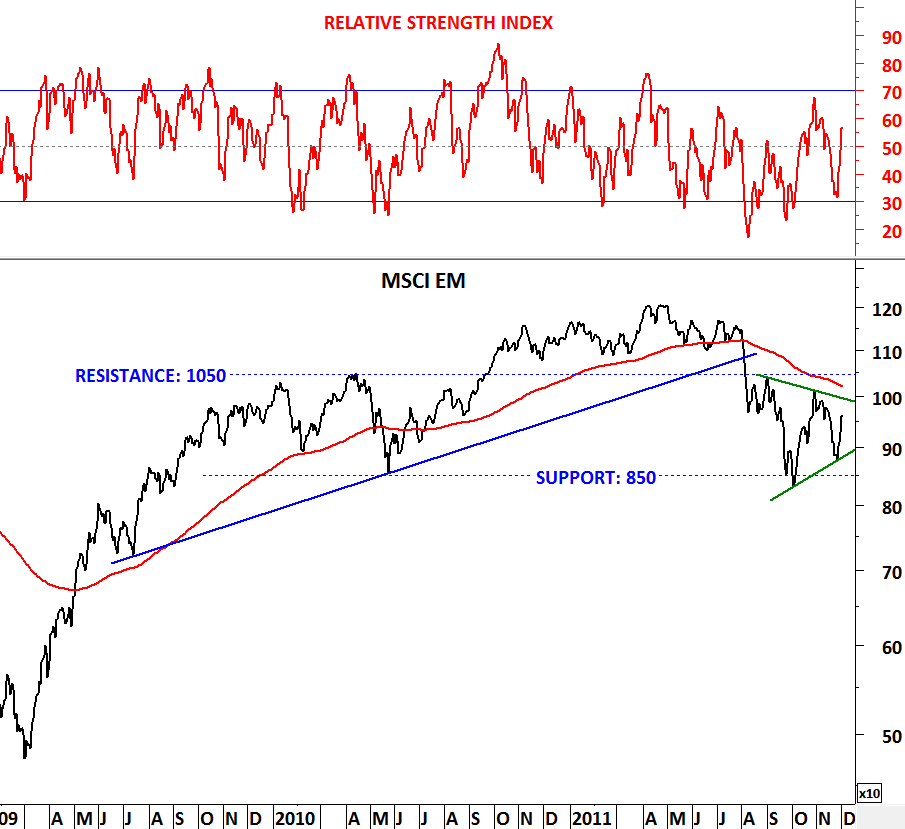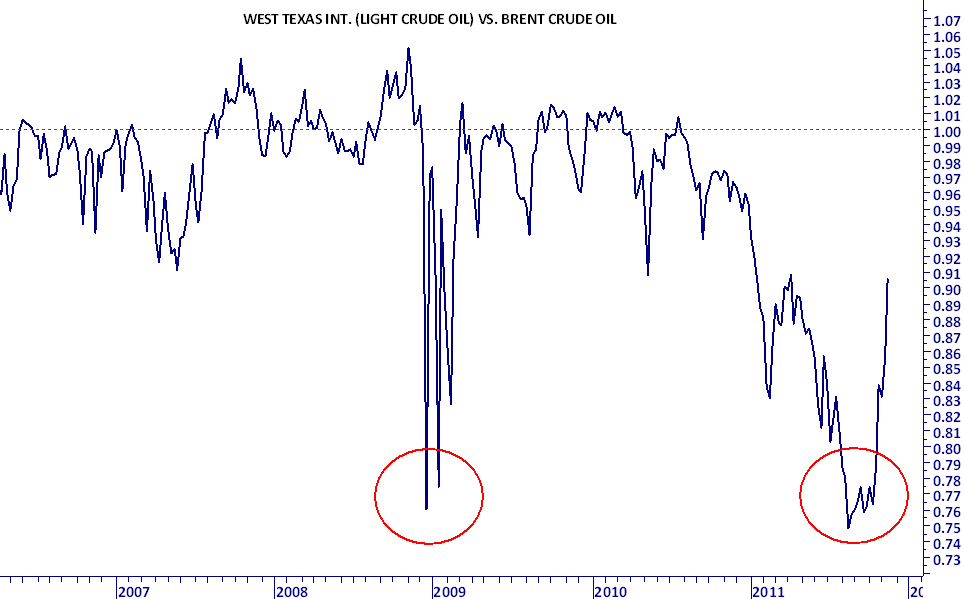CHINA SSE 50 INDEX
If stock markets are discounting mechanisms, China’s SSE 50 index is not giving us positive signals for the chinese economy and possibly for the global growth. At a time when almost everyone is expecting China to lead the global growth and help the rest of the world, weak stock market performance is telling the opposite… that China might be facing more trouble. SSE 50 index has been falling below its 200 day moving average and lately confirmed its downtrend by breaking below its 2010 low levels at 1,780. RSI has clearly established its move below 50 levels (a sign of a bear market). Lower lows and lower highs has formed a medium-term trend channel and the lower boundary of the trend channel is between 1,450 and 1,500. Expect further weakness in the Chinese stock exchange and the index to reach the lower boundary of its medium term trend channel.

